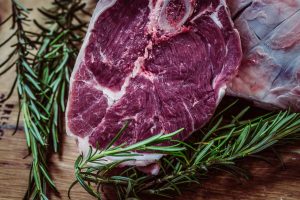COVID-19 revealed weaknesses in the industrial food supply chain. Let’s decentralize the food system and take our community resilience back!
The coronavirus pandemic has revealed systemic weaknesses in Big Food like no other event in recent memory. Not because the virus is foodborne (it isn’t), but because of the highly centralized nature of the American food supply and the distribution channels that get the food from farmers and producers to a store near you. Funneling such a vital commodity through a few major companies may be more efficient than spreading it out through a larger network of widely dispersed hands, but that also means that disruptions to the flow affect more people. It’s time to decentralize the food system and increase the resilience of our communities instead.
Have you shopped for beef lately? The rampant spread of COVID-19 through unprotected workers in close quarters at the country’s major meatpacking plants has resulted in slowed production and a shortage of commercially available meat, even as farmers and ranchers have had to euthanize livestock and leave the carcasses to rot in landfills. Rationing what’s available means higher prices and purchase limits for grocery customers, while some Wendy’s fast food restaurants have had to remove hamburgers from the menu entirely.
It doesn’t have to be this way. People have started finding ways around the meatpacking bottleneck. A Kansas man set up a Facebook page to bring farmers and consumers together, inspiring thousands of people to join and help each other out. Some distributors have started offering sides of beef and wholesale cuts for sale to the public, an option for families with freezer space and the know-how to do some processing at home.

Legislative efforts to decentralize the food system are also afoot. Although the public imagines USDA inspectors saving us from an Upton Sinclair-esque dystopia, federal agencies may not live up to this reputation as much as we would like (especially when led by an administration more intent on breaking government than fixing it). The PRIME Act, introduced periodically by Congressman Thomas Massie (R-KY) with bipartisan support, would allow states to (once again) set their own standards for meat that is processed and sold entirely within their borders. Currently, under the 53-year-old Wholesome Meat Act, meat intended for commercial sale, even from one neighbor to another, must pass through a USDA inspected slaughterhouse. These are often inconveniently far away, or, lately, too understaffed and overbooked to fulfill demand. Passing the PRIME Act could open the door for smaller slaughterhouses and local production to thrive even after these socially distanced times.
It takes more than meat to build a healthy diet, and many people also lack sufficient access to fruits and vegetables. Challenges exist in both urban and rural communities, but efforts to decentralize the food system can help both areas get more of what they need.
Neighborhoods without a grocery store may already have found workarounds. Residents of a public housing development in Deanwood, Washington, D.C., took matters into their own hands, working together to grow vegetables in raised beds on city-owned land. The garden was not locked, and residents could take what they needed. One man used garden vegetables to make giant pots of soup to share with everyone else at the end of the month, when money was tightest.
Meanwhile, some farmers are blending the advantages of cover crops with an opportunity to feed their own hungry neighbors. Rather than planting a monocrop of alfalfa or sorghum to plow under in due time, Jimmy Emmons, a farmer and conservation coordinator in Leedy, Oklahoma, sows a few acres of “chaos garden.” This mix of fruits and vegetables, similar to Indigenous Mexican milpa gardens, ripens over the course of the season, and harvesting it is a little like a treasure hunt. Some “chaos gardeners” like Emmons allow their neighbors and community members to forage and pick food to take home, some harvest for markets, and some donate the food, before turning cattle into the field or plowing it under to feed the next crop. Milpa-mix cover crops could be a viable way to decentralize the food system in rural food deserts.
Our globalized, industrial food chain got to be that way because it produces an amazing glut of cheap calories, but it does so in a destructive manner and is prone to breakdown when things go awry. We deserve better, and so do the essential food sector workers who are getting sick and dying to keep us alive. Fortunately, we have a well-stocked toolbox with techniques both traditional and innovative, and the ingenuity to use them. The future is uncertain. Let’s decentralize the food system and empower more people to step up and take control of their food security in changing times.
Related: On the Necessity of Land Reform


Join the conversation!